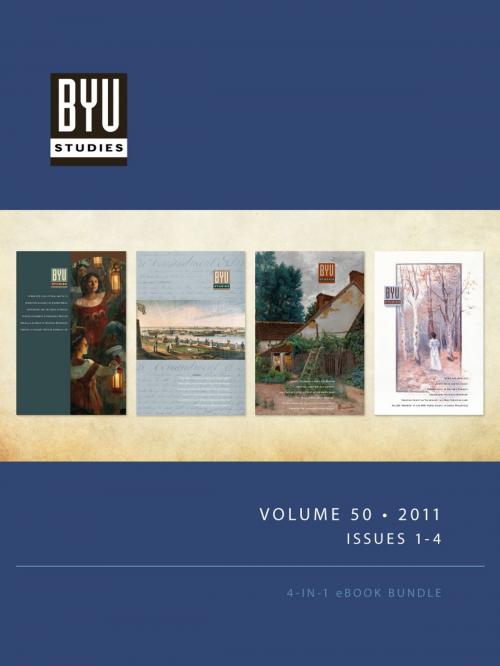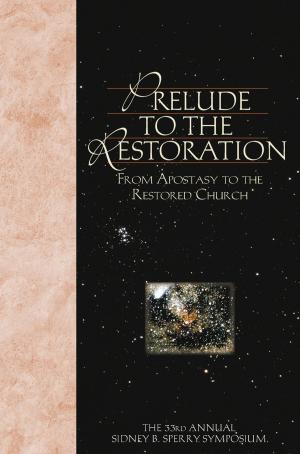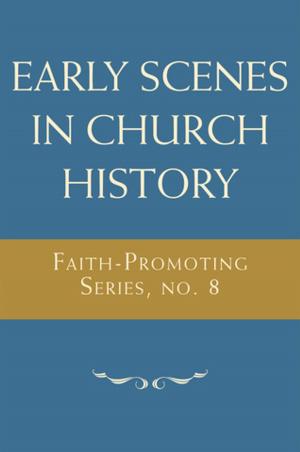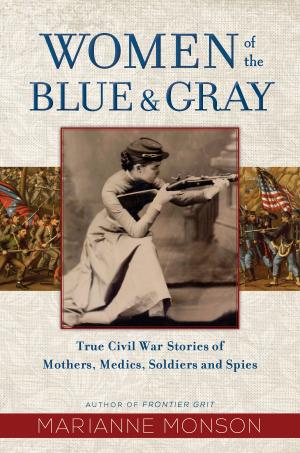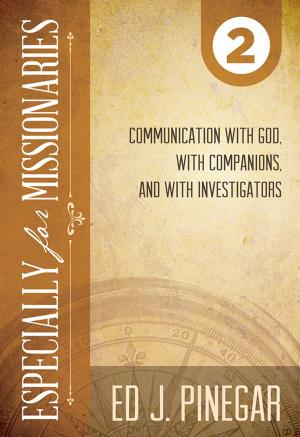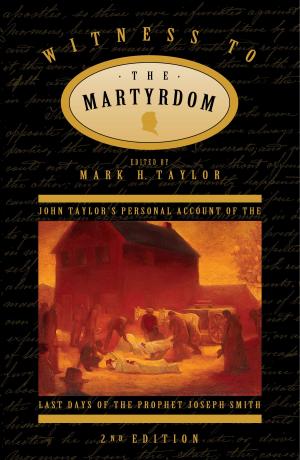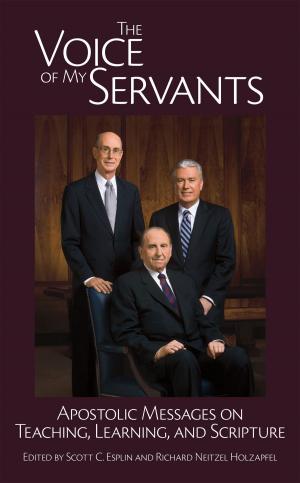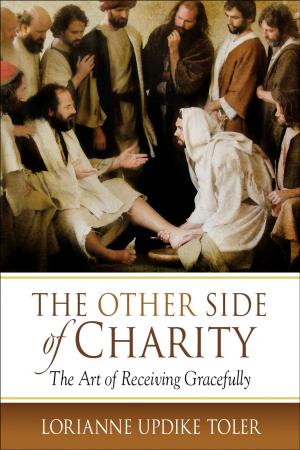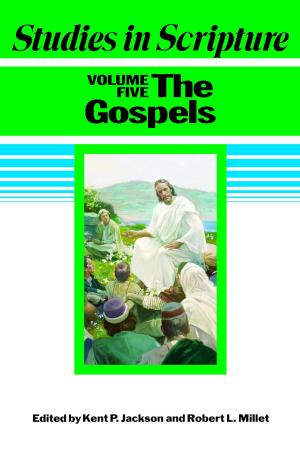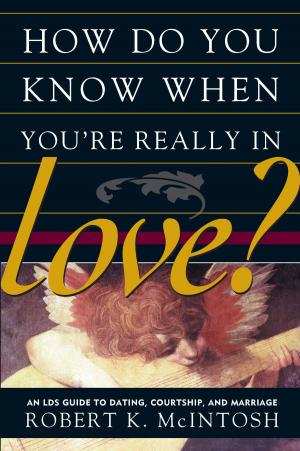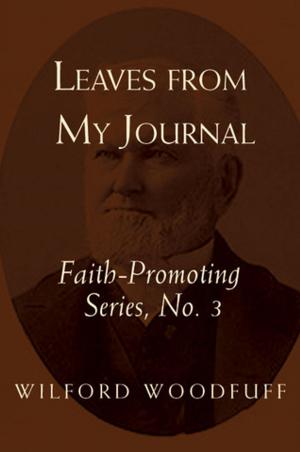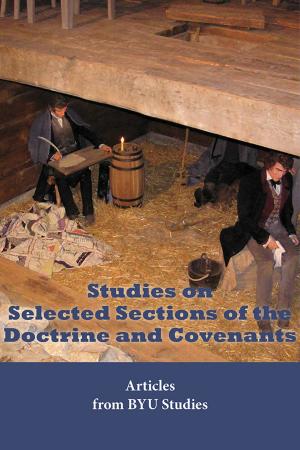BYU STUDIES Volume 50 • 2011 • Issues 1-4
4-in-1 eBook Bundle
Nonfiction, Religion & Spirituality, Christianity, Denominations, Mormonism| Author: | BYU Studies | ISBN: | 9781938896644 |
| Publisher: | Deseret Book Company | Publication: | January 1, 2011 |
| Imprint: | BYU Studies | Language: | English |
| Author: | BYU Studies |
| ISBN: | 9781938896644 |
| Publisher: | Deseret Book Company |
| Publication: | January 1, 2011 |
| Imprint: | BYU Studies |
| Language: | English |
Volume 50, number 1, begins with Joseph Spencer’s philosophical look at what it means to be Mormon: what is the nature of the faith that binds a very diverse group of members? Next is an article about the importance of music in Christian worship, written by a Catholic scholar in England. Next, astronomer Hollis Johnson explains the life cycle of stars and notes that Joseph Smith’s revelation on stars (found in the Book of Moses) was decades ahead of the science that would confirm that stars come into existence and pass away. Another article, by David Paulsen and Martin Pulido, collects Latter-day Saint Church leaders’ teachings about Heavenly Mother, affirming her role as a creator and divine parent of humankind. Brent Schmidt, a classical scholar, then shows that four ancient utopian communities had elements of covenant-making and strict commandments. This issue also features a selection from a newfound document written in 1871 by William McLellin that tells about McLellin’s interviews of the Book of Mormon witnesses. Another document presents a letter of a Scotsman describing St. Louis in 1840, including a description of Mormonism.
Volume 50, number 2, begins with Stephen Ehat’s thorough historical, geographical, and legal context for the so-called Canadian copyright revelation. Once considered lost, this revelation came to light with the recent discovery of the Book of Commandments and Revelations and has been published as part of the Joseph Smith Papers. Next, Edward Carter examines British copyright law and the efforts by the Quorum of the Twelve Apostles in the 1840s to secure copyright protection in England for the Book of Mormon and the Doctrine and Covenants. Jonathan Stapley writes on changing Mormon practices regarding death: prayers and anointings, preparation of the body for burial, and grave dedications. David S. Carpenter tells of the trials encountered by Mormon settlers in the struggling ranching community of Bluff, Utah, in the 1880s. Alan Hawkins and Tamara Fackrell share guidance from Church leaders and recent secular research regarding divorce. Jolene Merica explores the educational philosophy of Eliza R. Snow, general president of the Relief Society and Zion’s Poetess, as evidenced in four of her poems.
Former BYU academic vice president John Tanner leads off volume 50, number 3, with a paper he presented at an Oxford University symposium celebrating the 400th anniversary of the King James Bible. He explores the influence of the KJB in the lives of John Winthrop, Joseph Smith, Abraham Lincoln, and Martin Luther King. Following a long tradition of printing the Maeser Faculty Lecture, BYU Studies presents John Welch’s address given in 2011, “Thy Mind, O Man, Must Stretch,” which focuses on the mission of BYU and all pursuit of knowledge. This issue also includes an excerpt from Stephen Webb’s book Jesus Christ, Eternal God: Heavenly Flesh and the Metaphysics of Matter. This excerpt, from a chapter titled “Godbodied: The Matter of the Latter-day Saints,” is a fascinating look at LDS theology through the eyes of a non-LDS admirer of Joseph Smith. This issue also features three document articles. Mark Staker and LaJean Carruth introduce a transcript of John Taylor’s June 1854 account of the martyrdom of Joseph and Hyrum Smith. Mitchell Schaefer and Sherilyn Farnes present twenty affidavits of consecration in Nauvoo, which call for a reexamination of the common belief that the Saints did not live the law of consecration in Nauvoo. Finally, Rachel Cope presents selected letters of John B. Fairbanks from Paris, 1890 to 1892, as he served a mission to learn the art of painting. Fairbanks later helped create the murals in the Salt Lake Temple.
Volume 50, number 4, begins with Robert Millet’s comparison of the teachings of Joseph Smith with those of John Calvin, highlighting “striking differences” between the religious traditions these men helped establish. Van Gessel explores some of the challenges involved in translating Christian doctrine and, particularly, LDS vocabulary into Japanese, a traditionally non-Christian language. In a related article, Joseph E. Richardson examines both the uses of metaphor and the difficulties of translating metaphor in cross-cultural communication. Recognizing that what we do not know in any field exceeds what we do know, Duane Boyce uses examples from both scriptural and scholarly pursuits to illustrate the need for humility in all our learning. David L. Clark and Bart J. Kowallis bring to light the story of a small LDS “branch” that formed in a World War II Japanese POW camp in the Philippines. Most of the members of this branch died tragically when a U.S. submarine sank their unmarked transport ship. Finally, a panel of four experts from different branches of study review Terryl L. Givens’s expansive new book When Souls Had Wings: Pre-mortal Existence in Western Thought.
Volume 50, number 1, begins with Joseph Spencer’s philosophical look at what it means to be Mormon: what is the nature of the faith that binds a very diverse group of members? Next is an article about the importance of music in Christian worship, written by a Catholic scholar in England. Next, astronomer Hollis Johnson explains the life cycle of stars and notes that Joseph Smith’s revelation on stars (found in the Book of Moses) was decades ahead of the science that would confirm that stars come into existence and pass away. Another article, by David Paulsen and Martin Pulido, collects Latter-day Saint Church leaders’ teachings about Heavenly Mother, affirming her role as a creator and divine parent of humankind. Brent Schmidt, a classical scholar, then shows that four ancient utopian communities had elements of covenant-making and strict commandments. This issue also features a selection from a newfound document written in 1871 by William McLellin that tells about McLellin’s interviews of the Book of Mormon witnesses. Another document presents a letter of a Scotsman describing St. Louis in 1840, including a description of Mormonism.
Volume 50, number 2, begins with Stephen Ehat’s thorough historical, geographical, and legal context for the so-called Canadian copyright revelation. Once considered lost, this revelation came to light with the recent discovery of the Book of Commandments and Revelations and has been published as part of the Joseph Smith Papers. Next, Edward Carter examines British copyright law and the efforts by the Quorum of the Twelve Apostles in the 1840s to secure copyright protection in England for the Book of Mormon and the Doctrine and Covenants. Jonathan Stapley writes on changing Mormon practices regarding death: prayers and anointings, preparation of the body for burial, and grave dedications. David S. Carpenter tells of the trials encountered by Mormon settlers in the struggling ranching community of Bluff, Utah, in the 1880s. Alan Hawkins and Tamara Fackrell share guidance from Church leaders and recent secular research regarding divorce. Jolene Merica explores the educational philosophy of Eliza R. Snow, general president of the Relief Society and Zion’s Poetess, as evidenced in four of her poems.
Former BYU academic vice president John Tanner leads off volume 50, number 3, with a paper he presented at an Oxford University symposium celebrating the 400th anniversary of the King James Bible. He explores the influence of the KJB in the lives of John Winthrop, Joseph Smith, Abraham Lincoln, and Martin Luther King. Following a long tradition of printing the Maeser Faculty Lecture, BYU Studies presents John Welch’s address given in 2011, “Thy Mind, O Man, Must Stretch,” which focuses on the mission of BYU and all pursuit of knowledge. This issue also includes an excerpt from Stephen Webb’s book Jesus Christ, Eternal God: Heavenly Flesh and the Metaphysics of Matter. This excerpt, from a chapter titled “Godbodied: The Matter of the Latter-day Saints,” is a fascinating look at LDS theology through the eyes of a non-LDS admirer of Joseph Smith. This issue also features three document articles. Mark Staker and LaJean Carruth introduce a transcript of John Taylor’s June 1854 account of the martyrdom of Joseph and Hyrum Smith. Mitchell Schaefer and Sherilyn Farnes present twenty affidavits of consecration in Nauvoo, which call for a reexamination of the common belief that the Saints did not live the law of consecration in Nauvoo. Finally, Rachel Cope presents selected letters of John B. Fairbanks from Paris, 1890 to 1892, as he served a mission to learn the art of painting. Fairbanks later helped create the murals in the Salt Lake Temple.
Volume 50, number 4, begins with Robert Millet’s comparison of the teachings of Joseph Smith with those of John Calvin, highlighting “striking differences” between the religious traditions these men helped establish. Van Gessel explores some of the challenges involved in translating Christian doctrine and, particularly, LDS vocabulary into Japanese, a traditionally non-Christian language. In a related article, Joseph E. Richardson examines both the uses of metaphor and the difficulties of translating metaphor in cross-cultural communication. Recognizing that what we do not know in any field exceeds what we do know, Duane Boyce uses examples from both scriptural and scholarly pursuits to illustrate the need for humility in all our learning. David L. Clark and Bart J. Kowallis bring to light the story of a small LDS “branch” that formed in a World War II Japanese POW camp in the Philippines. Most of the members of this branch died tragically when a U.S. submarine sank their unmarked transport ship. Finally, a panel of four experts from different branches of study review Terryl L. Givens’s expansive new book When Souls Had Wings: Pre-mortal Existence in Western Thought.
